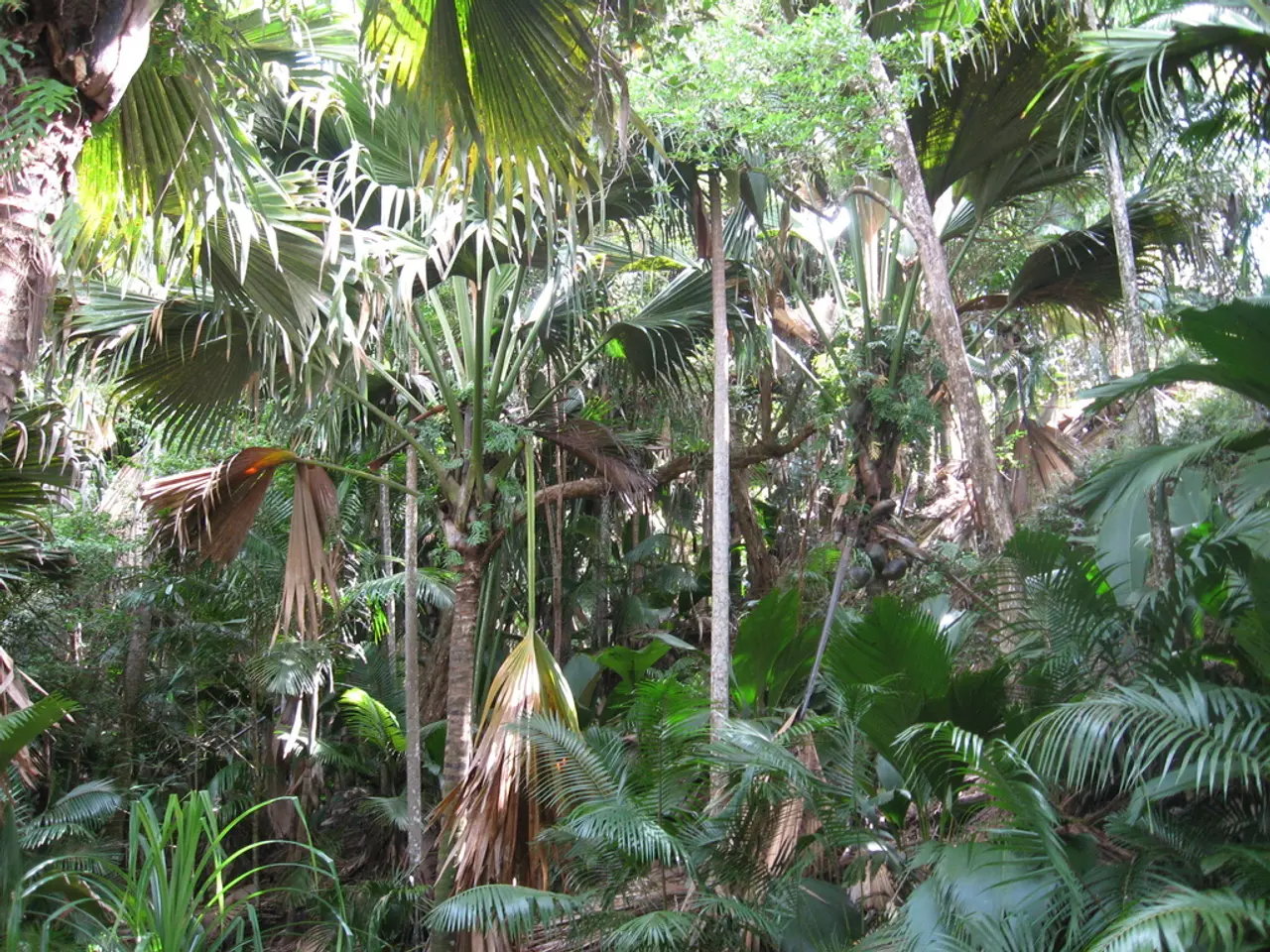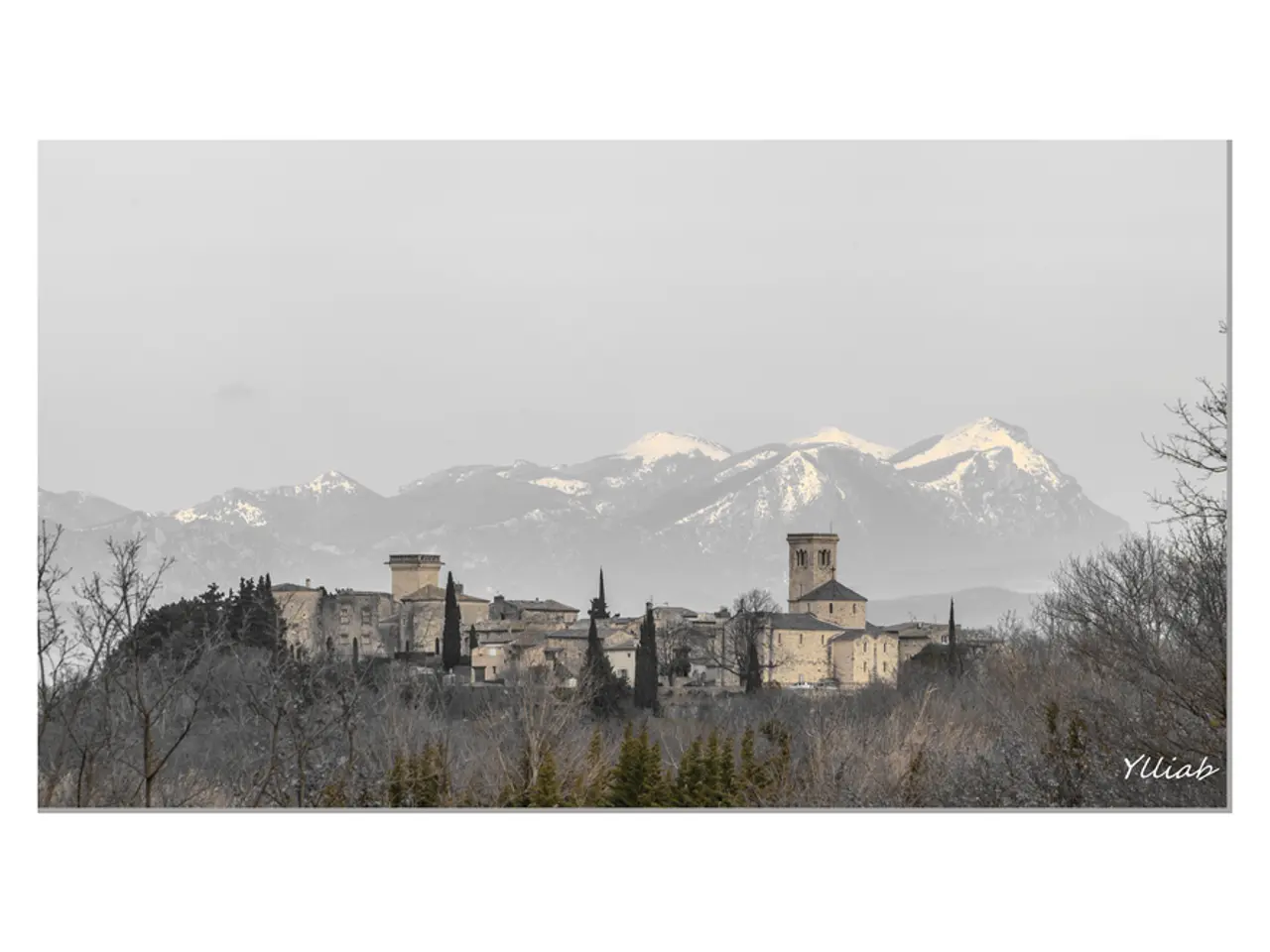Transforming Landscapes with Tree Plantings
In the process of enhancing your home landscape, planting trees can be a rewarding endeavour. Whether you opt for container-grown or balled-and-burlapped trees, success is achievable with the right techniques. Here's a step-by-step guide for each type of tree.
Container-Grown Trees
Planting Steps:
- Prepare the Hole: Dig a hole that is two to three times the width of the container but no deeper than it. This allows for good root expansion without causing settling issues.
- Remove from Container: Place the container on its side and carefully slide the tree out. If the roots are circling or root-bound, gently loosen them with your hands or a tool like a fork to break the pattern.
- Position and Fill: Place the tree in the hole, ensuring the soil level is the same as it was in the container. Fill the hole with native soil, avoiding the use of compost or potting mix to prevent root shock.
- Water and Mulch: Water thoroughly and apply a 2-3 inch layer of mulch around the tree, keeping it away from the trunk to prevent moisture accumulation and root issues.
Care:
- Watering: Water deeply once or twice a week until the tree is established. Monitor for signs of stress like leaf drop or wilting.
- Sunlight and Pruning: Ensure the tree receives adequate sunlight and prune branches that are damaged or growing in an undesirable direction.
Balled-and-Burlapped Trees
Planting Steps:
- Prepare the Hole: Dig a hole that is one and a half to two times the diameter of the root ball. Ensure the hole is as deep as the root flare (where the trunk meets the roots).
- Position the Tree: Place the tree in the hole, ensuring the root flare is slightly above ground level. This is crucial to prevent stem girdling roots.
- Remove Burlap and Twine: Cut away the burlap and twine, gently removing the material from around the root ball without disturbing it. If the root ball is falling apart, remove as much burlap as possible without disturbing the roots.
- Fill and Water: Fill the hole with native soil, then water thoroughly. Keep the soil consistently moist during the first year.
Care:
- Watering: Water once a week initially, adjusting based on weather conditions. For the first two years, water deeply and regularly to support establishment.
- Mulching: Apply mulch around the tree but keep it away from the trunk to prevent moisture accumulation and root damage.
General Tips:
- Ensure both types of trees receive adequate sunlight and are planted in well-draining soil.
- Regularly inspect trees for signs of disease or pests and take action promptly if problems arise.
- If unsure about specific care or planting techniques, consult with a certified arborist or local nursery professional.
- When planting a balled and burlapped tree, do not add compost, peat, or other organic materials to the soil.
- When planting a tree in a poorly drained site, choose trees that can tolerate poorly drained conditions.
- The diameter of the planting hole for a balled and burlapped tree should be 2 to 3 times the diameter of the tree's root ball.
By following these guidelines, you'll be well on your way to a thriving home landscape. Happy planting!
- In the home-and-garden space, planting trees, particularly container-grown or balled-and-burlapped, can have a rewarding impact on your landscape and even the surrounding wildlife.
- To achieve success with container-grown trees, prepare a hole with a width of two to three times the container, avoid going deeper than the original container, and gently loosen circling roots when necessary.
- Incorporate native soil while planting, water the tree thoroughly, and apply mulch to conserve moisture and maintain a healthy root system.
- Balled-and-burlapped trees require a hole that is one and a half to two times the diameter of the root ball, ensuring the root flare is slightly above ground level to prevent stem girdling roots.
- Adopt a lifestyle that includes regular watering, sunlight, and pruning for your tree, and always consult with a certified arborist or local nursery professional for specific care or planting techniques.




